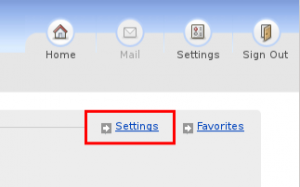I have released an update to this blog post: See CheckPoint SNX install instructions for major Linux distributions
It’s time for Fedora 16 and the obligatory how to get Checkpoint SSL extender VPN (SNX) working under it.

The first step is to get your username, password and ip address or host name of your snx server from your local administrator. Once you do that you can login and then press the settings link. This will give you a link to the various different clients. In our case we are looking for the “Download installation for Linux” link. Download that and then run it with the following command.
[root@laptop checkpoint]# sh +x snx_install.sh Installation successfull
All going well so far. Now let’s check that the required libraries are loaded.
[root@laptop checkpoint]# ldd /usr/bin/snx | grep "not found"
libstdc++.so.5 => not found
This can be solved easily enough using the command
yum install compat-libstdc++-33.i686
You should now be able to type snx without errors. You only now need to accept the VPN Certificate by loging in via the command line and press “Y”.
user@pc:~$ snx -s my-checkpoint-server -u username Check Point's Linux SNX build XXXXXXXXXXXX Please enter your password: SNX authentication: Please confirm the connection to gateway: my-checkpoint-server VPN Certificate Root CA fingerprint: AAAA BBB CCCC DDD EEEE FFF GGGG HHH IIII JJJ KKKK Do you accept? [y]es/[N]o:
Finally you should be able to use the client and login.

Same applies for OpenSuse 12.1 (used Yast to install libstdc++). Now I still need to get the remote desktop icon for the Wondows server though …
Pingback: Fedora 16 | kenfallon.com
Pingback: How to install checkpoint ssl extender VPN SNX under Fedora 16 64bit | kenfallon.com
Hi people,
I succeeded with the installation of snx on Fedora 18 (64-bit):
yum install glibc.i686
yum install libX11.i686
yum install pam.i686
yum install compat-libstdc++-33.i686
The connection is initiated without any problems, but shortly after that I cannot access anything on the web.
I thin, it has to do something with the 64-bit system, because on 32-bit Linux Mint Debian I do not have these problems.
Do you have any idea?
Thanks in advance and kind regards,
Stefan
Hi Stefan,
I’m not sure I agree with you. I am currently using it without issue on several Fedora 18 system, two which were clean installs 32bit/64bit and another that was a 64bit upgrade from Fedora 17.
Ken.
Does anybody face the same issue than Stefan Lazar??? I’m having right now the very same problem, I installed:
– Ubuntu 12.04 x64
– Fedora 18 x64
– Fedora 18 x86
And none of those kept me online. As soon as I connect, Internet just dies. And as soon as I type snx -d, Internet get back from the ashes.
I’m kinda desperate. Imagine that I’m installing Windows right now to see if there’s a problem on the computer.
I spoke to both Stefan and Bob about their issues and am glad to report that their issues have been resolved. In Stefan’s case the VPN was rewriting the routing tables, discovered by comparing “route -n” before and after bringing up the connection. Bob’s problem turned out to be that he was using the same IP Range locally as the VPN was using.
Hi Ken
Great article. Thanks again!
Michael